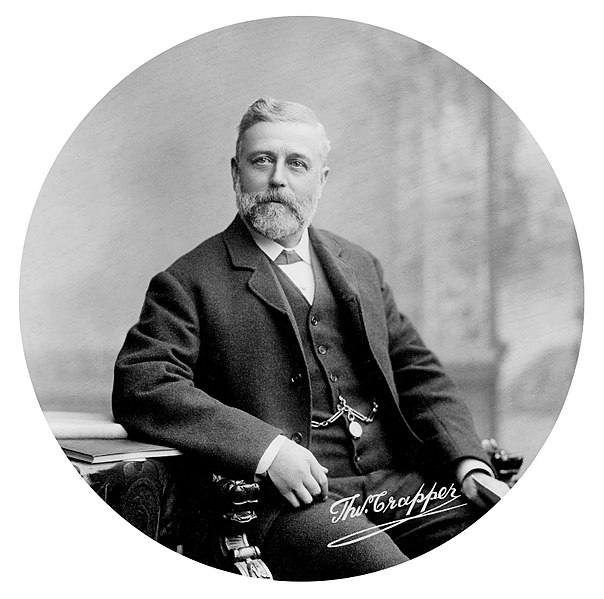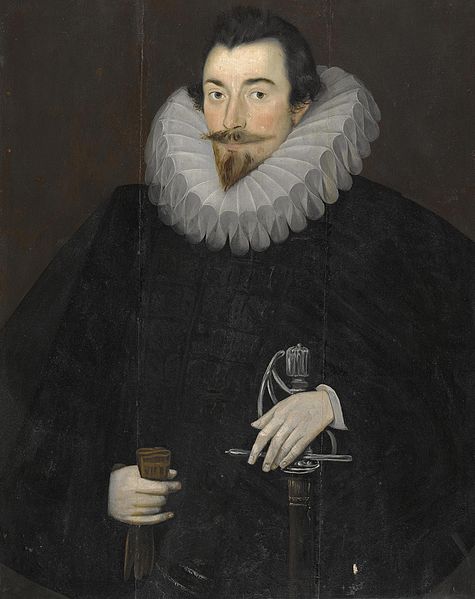There are names of great inventors and innovators in history that stand out about the rest. Thomas Edison brought the world out of the dark when he invented the first light bulb. Alexander Graham Bell connected the world when he invented the telephone. Henry Ford gave the world the ability to move from place to place when he developed the first automobile. One name that doesn’t receive the accolades that they deserve? Sir John Harrington, the inventor of the first flushable toilet.
Think about a world without toilets. It would quite literally, stink. Disease would run rampant, pollution would be uncontrollable, and our day-to-day lives would be completely different. There are a handful of figures who played an important role in the history of toilets, leading the way for us to use the bathroom the way we do today…with our smartphones in our hands. Here’s a bit about each of them.
Table of Contents
- Romans
- Sir John Harrington
- Alexander Cummings
- Thomas Crapper
- Joseph Gayetty
- E. Irvin and Clarence Scott
Ancient Romans

While the Romans weren’t the first civilization to develop ways to move waste out of their homes, they were the first to figure out how to do it on a large scale, laying the foundation for most cities’ modern day sewage systems. Through the use of aqueducts, which were a series of “water highways” designed to move fresh water into Roman cities and remove wastewater back into the countryside, the Romans were able to build massive bathhouses. These works of engineering mastery not only featured running water in the baths, but also had rooms with hundreds of toilets along the walls. Men would gather here to chat and catch up on the news, and once they were done with their business, the waste simply flowed out of the bathhouse and into an aqueduct to be whisked out of the city. The next time you flush your toilet, be sure to thank the Romans! Learn more about the Romans in toilet history.
Sir John Harrington
via Wikicommons
In 1596, Sir John Harrington published the first documented book on how a flushable toilet works, titled Metamorphosis of Ajax. Legend has it that Sir John Harrington, who happened to be a godson of Queen Elizabeth, was exiled from the kingdom for his overuse of inappropriate humor and language (potty mouth), so while he was constructing a home to live in, he developed a flushable toilet system that he dubbed the Ajax. His simple design included an elevated cistern that held water, that when released from a value, would run through a pipe and into the toilet bowl, causing the waste to be pulled down through the drain and out of the home. When Queen Elizabeth visited Harrington’s home, she was so impressed with his invention that she commissioned him to install one in her palace at Richmond.
Alexander Cummings
Fast-forward over 200 years, and the flushable toilet has yet to take off. A watchmaker from England, Alexander Cummings, developed a new part of the toilet, commonly known as the S-trap, which blocks the odors that would otherwise come back up through the drain line of a toilet. Once Cummings S-trap was patented in 1775 and began being used in toilet construction, the popularity of toilets throughout England and Europe grew exponentially.
Thomas Crapper

Crapper is more of a legend of toilets than he is a “founding father”, but he did contribute an important development to the design of toilets. He developed and patented the siphon system for draining water tanks into the toilet, which solved a leaking problem caused by the previous design that called for a floating valve. While Thomas Crapper had nothing to do with a toilet affectionately referred to as a “crapper” by millions, his name did appear on the water boxes above toilets in London in the early 1900s, cementing the legend of “T. Crapper” into the history books.
Joseph Gayetty
While different iterations of toilet paper were around well before Gayetty’s time, this innovative New York City inventor created the first commercially available toilet paper, of which each individual sheet was printed with his name on it. Gayetty’s toilet paper was sold in boxes similar to a modern day Kleenex box, and was filled with individual sheets of manila hemp paper that was infused with aloe vera.
E. Irvin and Clarence Scott
These two brothers from Philadelphia founded the Scott Paper Company in 1879, and are credited as the first company to manufacture toilet paper on a roll. Their brand of toilet paper, Waldorf, became the top selling brand of toilet paper in the world by 1902, thanks in part to their distribution network of high-end hotels, pharmacies, and grocery stores. Today, the Scott Paper Company is the largest manufacturer of toilet paper in the world, and is worth an estimated $4 billion dollars.

